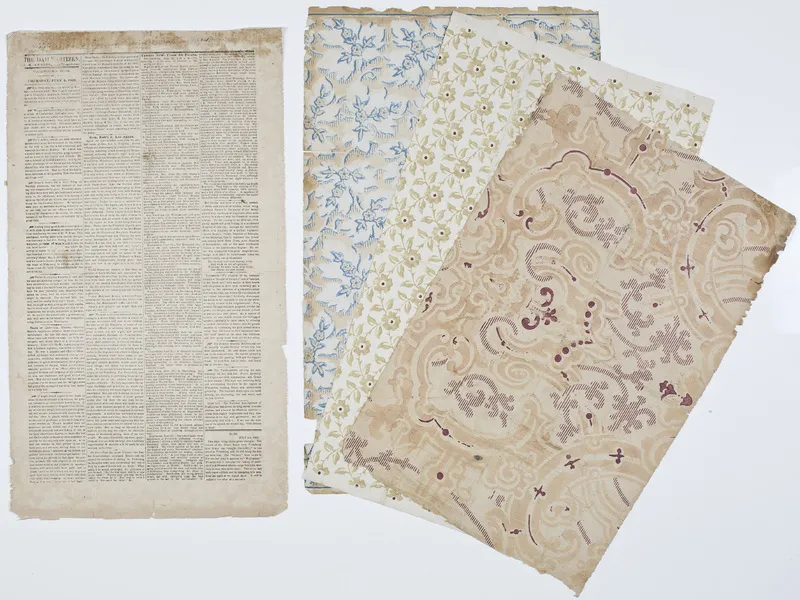Vicksburg, Mississippi, had three newspapers in the antebellum era to keep its citizens informed of national and local events. The Vicksburg Whig, the Sun, and the Daily Citizen. Before the war, the Daily Citizen urged residents to delay secession or at least consider other options. It also encouraged male readers to vote for Democrat candidate Stephen A. Douglas during the 1860 Presidential Election, avoiding the other Democrat runners: John C. Breckinridge who was seen as a more fire-eating secessionist or John Bell’s Constitution Union platform. The candidate of the newly-formed Republican Party, Abraham Lincoln, won the election, and in January 1861, Mississippi passed an ordinance of secession and shortly after joined the Confederacy.
The Daily Citizen was a short-lived newspaper, started in 1859 and finished in 1863. The owner and editor, James M. Swords, lived at the Steele Cottage and did some—if not all the printing—at his residence.
By the spring of 1863, Vicksburg held out as the last Confederate stronghold on the Mississippi River. If captured, the Confederacy would be divided, leaving Texas, Arkansas, and Louisiana from the other seceded states east of the river. The Union Army surrounded Vicksburg in May 1863, cutting off supplies to the city and trapping civilians with Pemberton’s Confederate army. Union General Ulysses S. Grant was determined to capture it while Confederate General John C. Pemberton was equally determined to hold Vicksburg.
As the siege continued into June and July, supplies in the city dwindled, including paper. On June 18, J.M. Swords ran out of paper but determined to continue publishing. He seemed to want to keep a sense of normalcy for the civilians who had started living in earthen caves for protection from cannonballs. The Daily Citizen’s articles offered jabs at the Union soldiers, rumors of war news beyond Vicksburg and Confederate victories, and local news. To improvise through the paper shortage, Swords removed wallpaper from his home, cut and prepared it, then ran it through the press. He used the white side of the paper for printing and the back of the paper was colorfully decorated with the “recycled” wallpaper. Single sheet editions of the Daily Citizen printed on June 18th, 20th, 27th, 30th and July 2nd consisting of just four columns each on this improvised paper.

Swords had spent weeks trying to boost civilian and Confederate soldiers’ morale with his publication. By the end of the siege in July 1863, the Daily Citizen was the only still-published newspaper. Its competition – the Vicksburg Whig – had been destroyed when an artillery projectile smashed the presses. Confederates in Vicksburg surrendered on July 4, 1863, and Union troops occupied the city. Swords fled and the Union troops found the printing type of the Daily Citizen still set in the press and an unfinished fourth column of the paper. They decided to add their own note at the end of the issue and print it, which would be the last edition:
Two days bring about great changes, The banner of the Union floats over Vicksburg. Gen. Grant has "caught the rabbit:" he has dined in Vicksburg, and he did bring his dinner with him. The "Citizen" lives to see it. For the last time it appears on "Wall-paper." No more will it eulogize the luxury of mule-meat and fricassed kitten -- urge Southern warriors to such diet never-more. This is the last wall-paper edition, and is, excepting this note, from the types as we found them. It will be valuable hereafter as a curiosity.
After the soldiers had printed a few copies, they noticed that the title was misspelled “CTIIZEN” but they quickly corrected it and finished printing the rest. The misspelling became known as the first edition and the correction became known as the second edition. It is hard to say how many of these were made, but there were later reprints thus making it difficult to determine if it is an original.
According to the Library of Congress, it has original copies of both the misspelled and corrected titles, as well as reprints. The Minnesota Historical Society, the University of Indiana and a private collector also report having first editions. The American Antiquarian Society holds an original and several copies of the second edition.
Though the Daily Citizen existed for a relatively short period of time, it was published during some of the most historic events in Vicksburg and a turning point of the American Civil War. Printed on wallpaper in the end and with the final words of the last column typeset by Union soldiers, the latest editions of the Daily Citizen can serve as a visual and a primary source about the difficulties and outcome of the siege of Vicksburg.
Related Battles
4,910
32,363






